April Yau, Major Tom’s Account Services Director in New York, is a growth marketer with expertise in tourism, fashion, and education — an expertise that shines through her most recent webinar, Navigating Tourism & Hospitality Marketing during COVID-19. April’s cover-all approach includes both a high-level overview and tactical pieces for immediate implementation, catering to a mixed crowd of attendees that includes marketers, business owners, and travel advisors.
This written version of the webinar takes you through a crash course on what you need to know and do if you are a part of the hospitality and tourism industry.
“There needs to be a travel industry to return to,” April states. Cutting marketing spending completely may save you money right now but the price you pay in the long run may cripple your business. By continuing to spend and market your brand even by half, as April suggests, you can stay top-of-mind and capitalize on the pent up demand once travel restrictions are lifted. Plus, industry search trends point to an audience who are still dreaming about — and in some cases, booking — future travel plans.
Though COVID-19 may have made our world feel as though it is at a standstill, that isn’t the case for online behavior. Just because the economy has largely been paused, it doesn’t mean people aren’t planning for the future. For many, including the tourism industry’s audience, looking to the future gets them through the present day. “Frequent travelers are currently at home,” states April, “looking forward to travel again once the restrictions have been lifted.”
Evidence shows that travelers are still searching and booking holidays for later on in the year, emphasizing the need for continued marketing efforts. April identifies that global hotel search trends dropped during the initial frantic anxiety over COVID-19 but are now, fortunately, plateauing. Global and interregional markets are thought to be the first to recover.
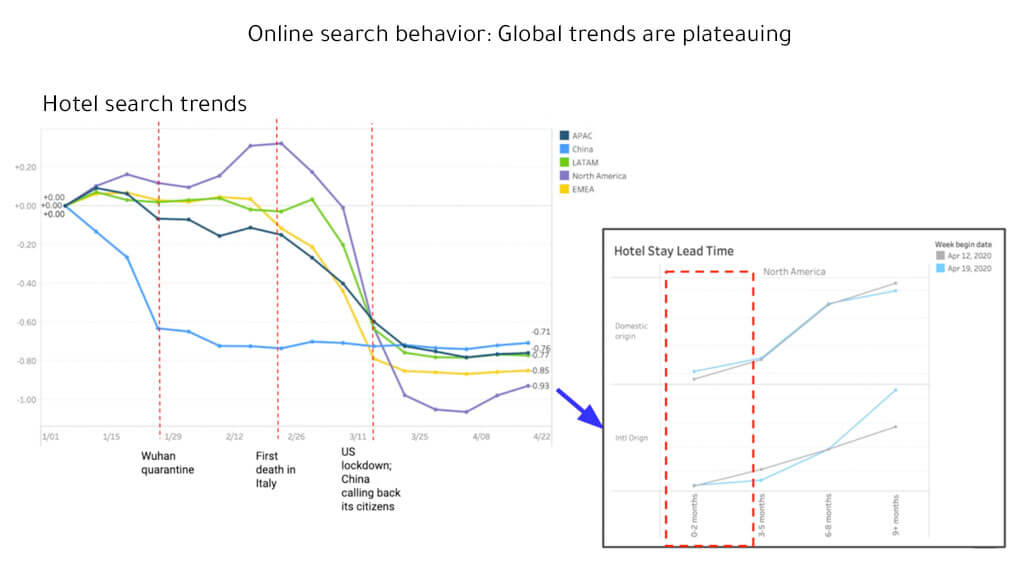
Source: Sojern, April 2020
Pivoting your marketing efforts to include travel in which people can control the space surrounding them will be beneficial. Travelling by plane, after the initial lifting of travel restrictions, means people will be seated in an enclosed environment that they have no control over. Understandably, searches relating to domestic travel, such as by car or RV, will spike instead. On that note, searches for domestic hotels, especially within the US and Canada, are spiking, with stays in the next 6-9 months steadily increasing.
Any marketer worth their salt will tell you to know who your audience is. You want to get inside your potential consumers’ heads and find out what motivates them to take action. April studies consumer psychographics based on Facebook Conversation changes that impact tourism.
Traditional travel destinations (like Asia and Europe) have witnessed a change in conversation. Once called out for tourist attractions, Italy and Spain are now in the news for being hit hard by the pandemic. Hope grows in Guangzhou, China and Venice makes headlines for the clear-water canals.
Brands can promote and create content with new focuses like the above mentioned material. Consider what your audience is already talking about: when Venice comes up in conversation, the topic revolves around the fake news (sorry to debunk this feel-good tale) story about dolphins returning to the clear-water canals. To stay relevant, you need to join the conversation on the level that your audience is at. Weigh in on trending topics relevant to your brand.
One of the silver linings of the pandemic is the global resilience people are displaying. People are continuing to dream, even locked down during a pandemic. On the appetite for travel-related content, April says “brands can help consumers plan or reschedule their next trips by showing flexibility and providing consumers with online experiences to their products to help them keep on dreaming.”
Offer your audience flexible incentives to book now, like gift cards or rewards with no expiration date.
Adaptability during COVID-19 is key for brands to survive. Search terms are reflecting the companies and places which have become adaptable. For example, The Great Pyramid of Giza and The Met both are now accessible for online visitation.
At home tourism is the new going out. Audiences are searching for ways to experience the things they love without leaving their homes. It can be as simple as mimicking simple experiences, like brewing your favorite cafe drink at home.
Right now, free content pays in dividends. IKEA released their famous Swedish meatball recipe for free, resulting in a lot of noise online and positive reception by Swedish meatball fans.
In downturns, marketing budgets are often the first place leaders turn to save money. Completely eliminating your marketing budget can have drastic repercussions for your organization as marketing brings in leads and sales and helps retain top talent. Instead, every business should dedicate time to setting up a ‘crisis – recovery – growth’ plan. Most businesses now will be past the Crisis Phase, April states, however it is still important to note.
Following a crisis – recovery – growth plan takes a 3-phased approach to recovery from COVID-19.
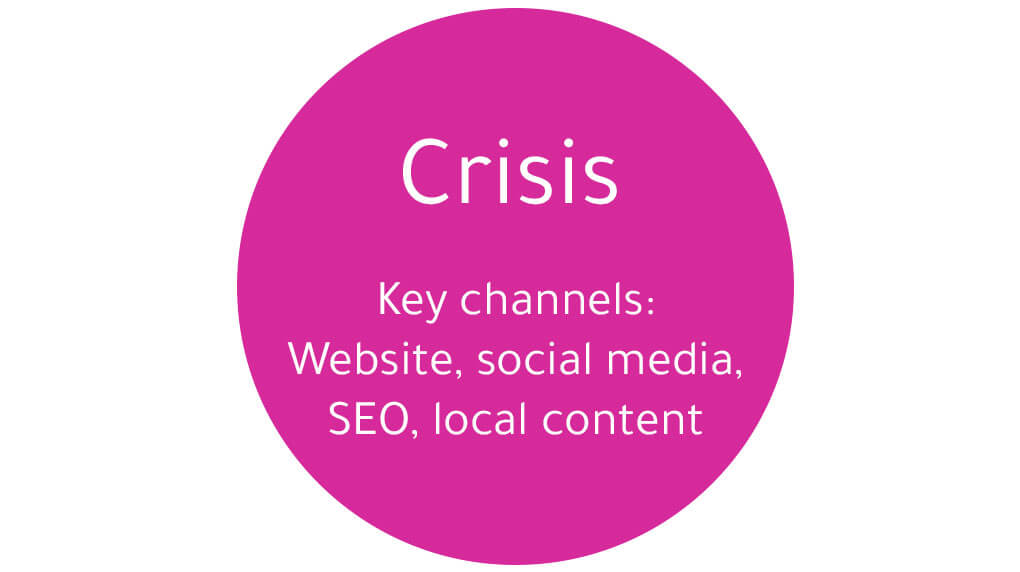
During the crisis phase, you will want to add COVID-related content to both your website and social media channels. This phase involves maintaining your online presence while updating your information to stay current.
April lists actionable items and considerations for marketers:
The key channels to pay attention to in this phase are: website, social media, SEO, and local content.
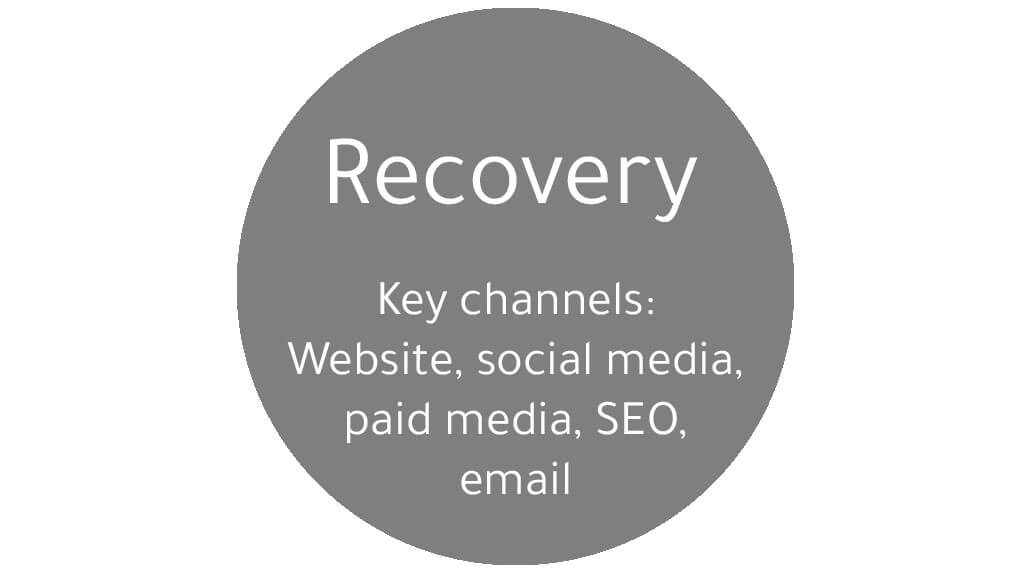
During this phase, marketers need to listen closely to what their audience wants or needs. They should also be sure to make relevant information communicated effectively. Don’t make your audience work to find out how they can support your business. Use your remarketing lists here for optimal engagement.
April lists actionable items and considerations for marketers:
The key channels to pay attention to in this phase are: website, social media, paid media, SEO, and email.
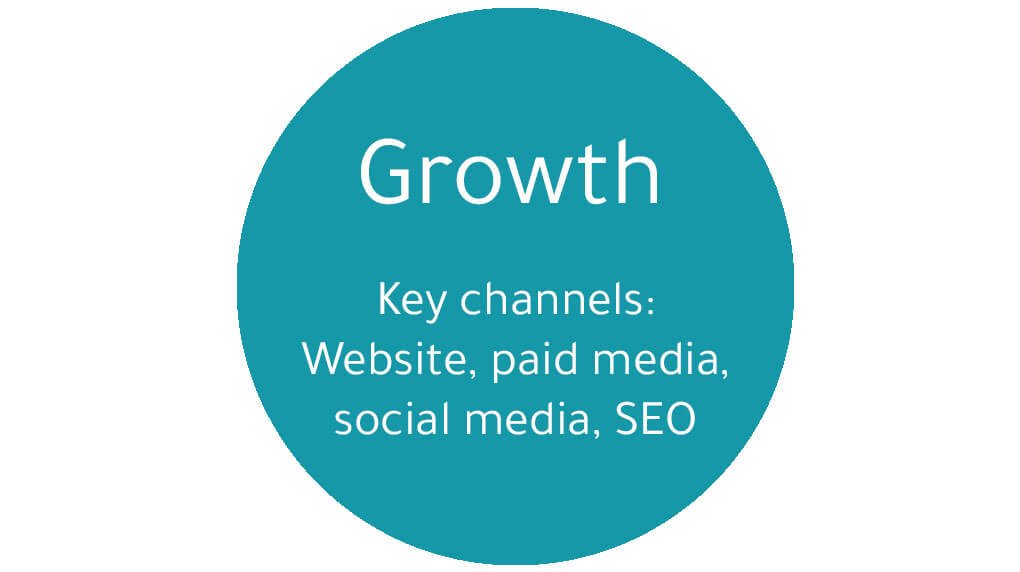
During this phase, marketers need to plan for future growth.
April lists actionable items and considerations for marketers:
The key channels to pay attention to in this phase are: paid media, social media, website, and SEO.
April identifies five areas to focus on for success based on research involving other brands.
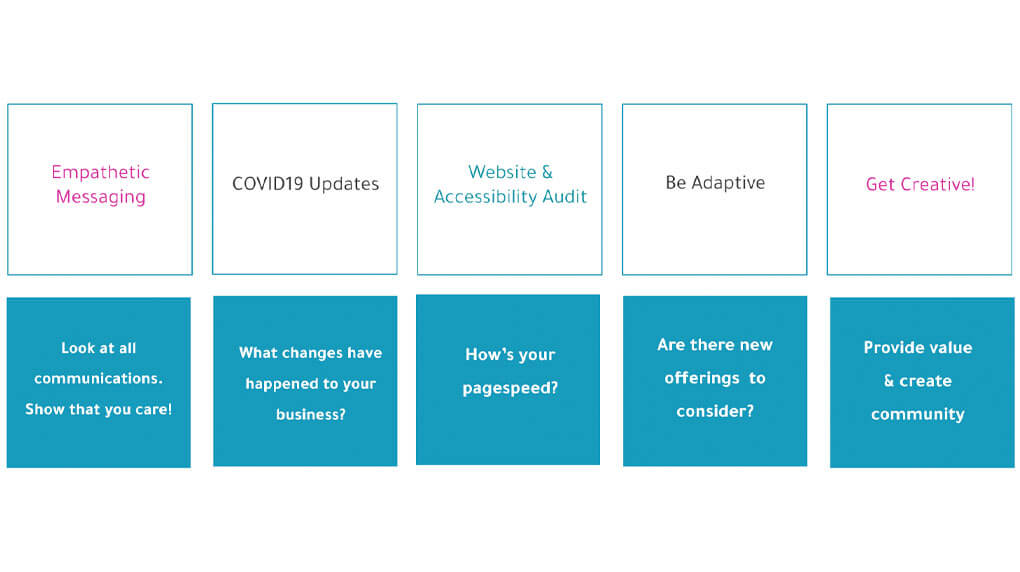
“Look at all of your communications… no one wants to be sold to right now, a sales focus creates a negative type of perception of your brand because you’re not showing empathy to the current situation.”
Take a balanced stance between empathy and visibility. Show that you are aware of the current struggles of your audience and their community with sensitive messaging. You can update your profile messaging to reflect empathy toward COVID or pin a feel-good tweet. For example, The Marriott showcases how they are helping their community and the initiatives they are championing. This tact helps them to stay relevant, balancing their messaging between visibility and empathy.
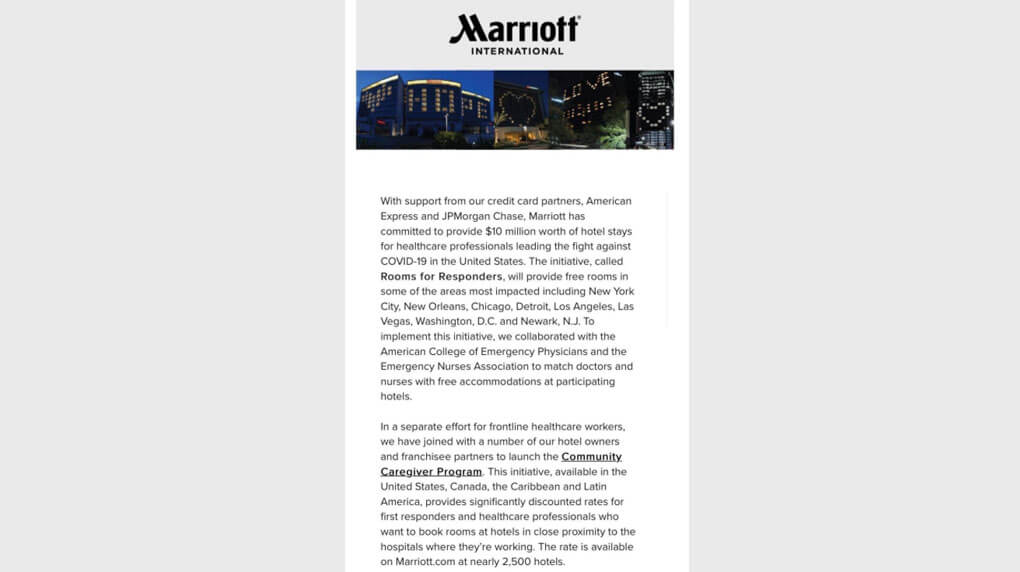
If you are soft selling, explicitly say what your terms and conditions are. You need to be clear.
What has changed for your business and how are you communicating those shifts? This “doesn’t have to be a massive undertaking, it can be as simple as updating your hero image,” April states.
A direct approach with softened language tells people what they need to know while still communicating with empathy.
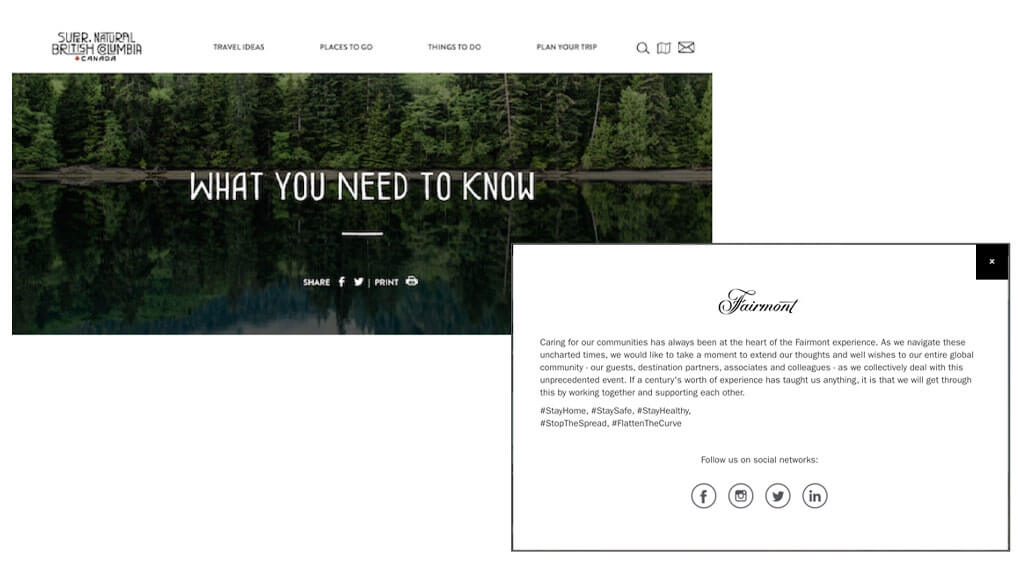
What is your page speed? Are there things you can work on now that will set you up in the future?
Page speed is one of the single most important factors for keeping people on your site. Since it can take 3-6 weeks to get your page speed fixed, there’s no time like the present.
Accessibility Audits are also a great way to improve your online presence and plan for the future.
Brands have been adapting and diversifying to meet consumers’ changed needs.
Abercrombie & Kent, for example, has diversified from luxury travel content to national parks. They looked at their audience and industry trends and adapted to the marketplace, making new areas accessible to a new audience.
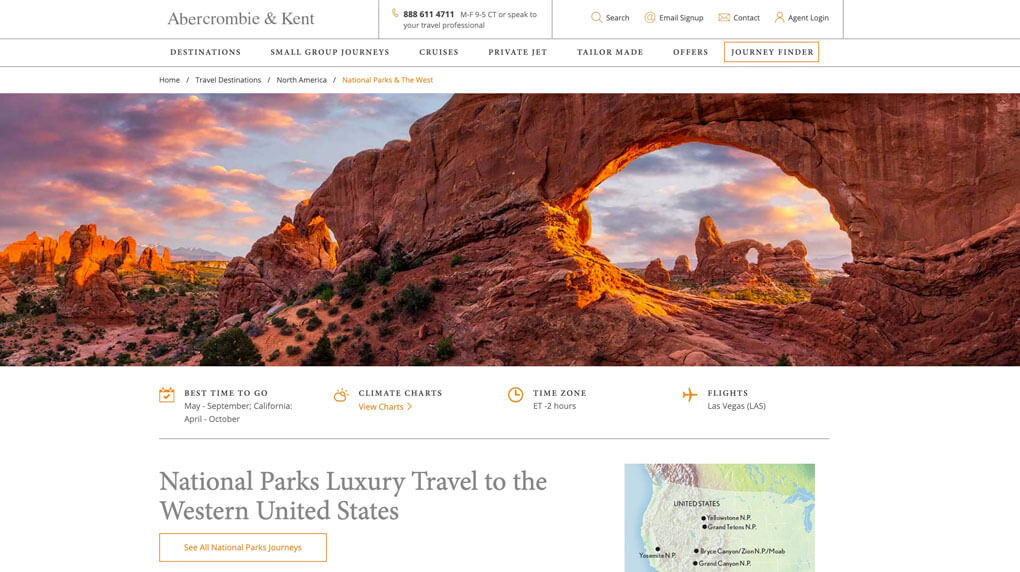
You can provide value to the creative community and stay top of mind by flexing your own creativity.
Cultivating community aspects through things like live feeds, podcasts, virtual parties, recipes for dishes and cocktails, or bringing people together from various parts of the world on your social platform.
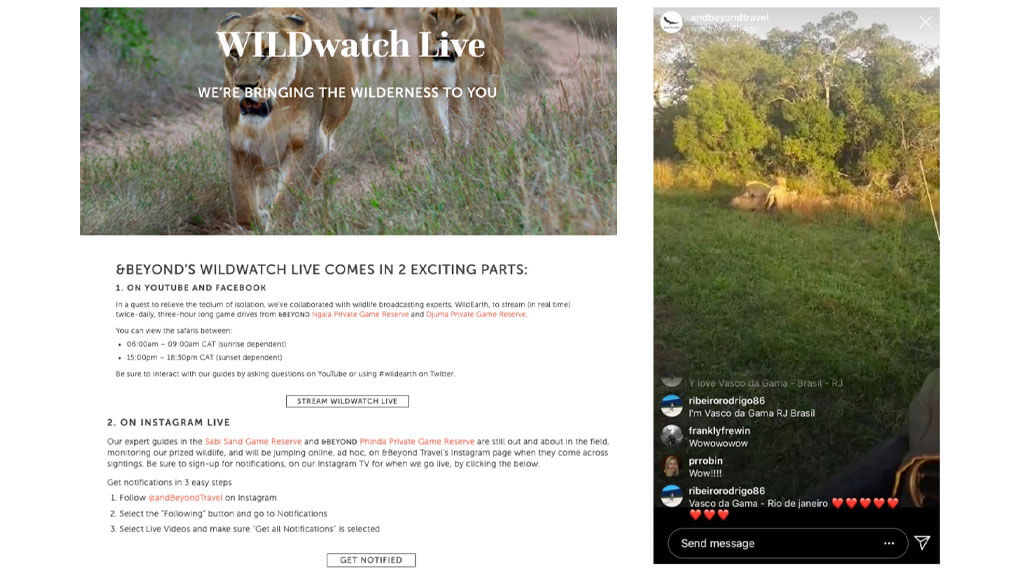
&Beyond, the safari organization, have adapted and are showcasing their safaris online. The information is easy to find and understand on their site with relevant, empathetic messaging. This strategy also cultivates interest in their brand, showing users what your experience will be about in real life.
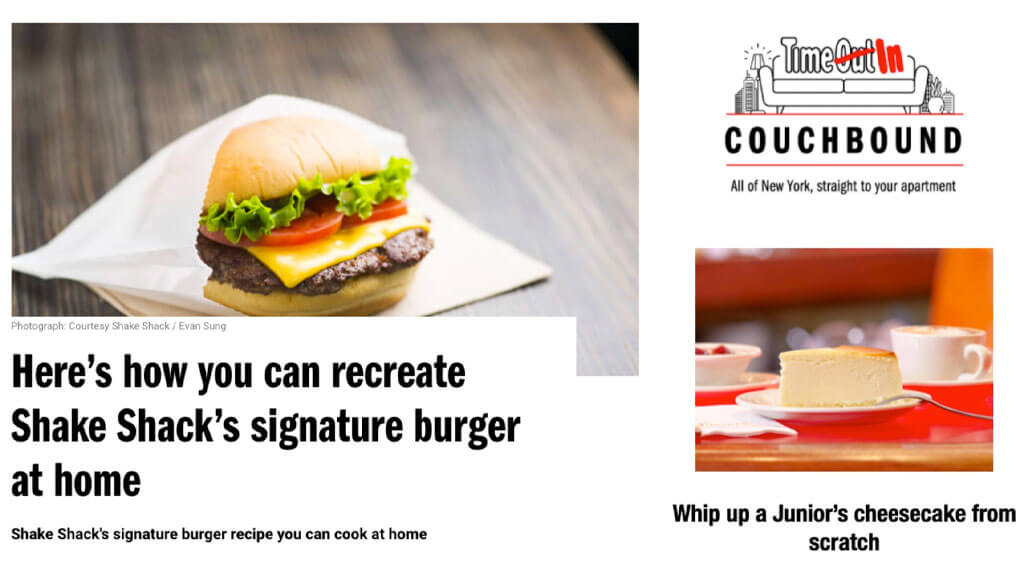
TimeOut, the global travel and tourism magazine, has now become TimeIn, adapting their focus to at-home tourism with empathetic messaging. Now, they are providing clear value to users with recipes on how to make iconic dishes at home, such as Shake Shack burgers.
Staying top-of-mind with your audience will keep you relevant, putting your organization in a better position once COVID-19 is over. With a recovery plan in place, you’ll be ready to receive the outpouring of bookings once the global tourism economy is unpaused.
Want support from our experts? Contact us today.
Confidence is a skill you build through action.
Receive exclusive action-focused content and the latest marketing insights.